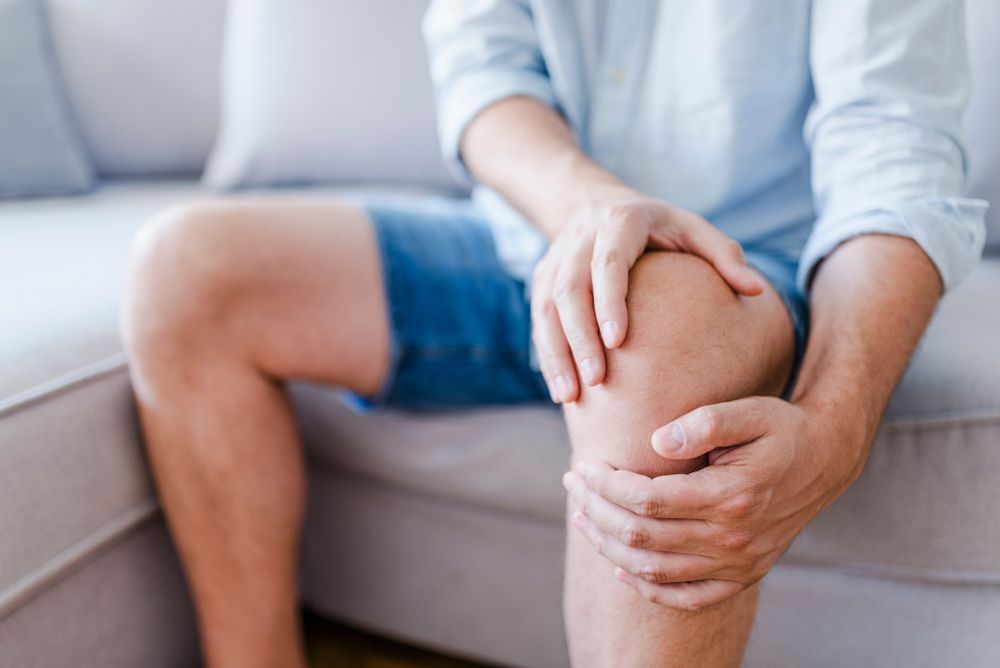Osteoarthritis occurs when the cartilage that cushions the ends of bones wears down. This can cause mild to severe pain in the affected joints, most commonly in the hands, knees, hips, and spine.
The condition is chronic and gets worse with time. The pain can be treated to aid mobility and manage pain. (Learn More)
Key to treating osteoarthritis is figuring out the best way to control a patient’s pain. A medication’s risks must be balanced against its benefits.
Generally speaking, a patient will be prescribed the mildest anti-inflammatory pain medication that can serve their needs. This helps to control the risk of serious side effects and any abuse potential. (Learn More)
Nonsteroidal anti-inflammatory drugs (NSAIDs) are good options to treat moderate to severe osteoarthritis. They can control pain and inflammation.
Topical NSAIDs have a growing body of evidence suggesting they should often be used over oral NSAIDs. These medications are more common in Europe, but topical NSAIDs are growing in popularity and availability in the U.S.(Learn More)
If you and your doctor are considering topical NSAIDs, have a direct conversation about risks, any health conditions you have, and any drugs you use, including medicines and recreational drugs. Topical NSAIDs may be safer than oral NSAIDs, but they are not without risks. (Learn More)
If using any kind of medication to treat osteoarthritis, remember to look into supplemental treatments that may help you further. Exercise, losing weight, and certain devices like canes and braces can all help to relieve stress on your joints and decrease your pain. Anything that can relieve pain and/or increase mobility can go a long way to increasing your quality of health. (Learn More)
Topical NSAIDs are not without risks, and they are not the best option for every patient. However, they can be of genuine help to many. (Learn More)

Osteoarthritis
Osteoarthritis is a common form of arthritis. It occurs when the cartilage that cushions the ends of bones wears down. It can affect any joint, but it is most common in the hands, knees, hips, and spine.
Affecting millions of people worldwide, osteoarthritis can cause the following at the affected areas:
- Tenderness
- Loss of flexibility
- Pain
- Stiffness
- Bone spurs
- Popping or cracking sounds, accompanied by grating sensations
- Swelling
If you experience any of the above and it does not go away, see a doctor. While it is often associated with the elderly, osteoarthritis can affect a broader spectrum of people than was once thought.
Unfortunately, osteoarthritis is a chronic condition that can worsen with time. There is no cure, but treatments are available to manage the pain it causes and to improve mobility.
The Importance of Pain Relief
The main goal of osteoarthritis treatment is to treat a patient’s joint pain.
For some patients, relatively mild pain medications like acetaminophen might be suitable. You and your doctor will work to find the necessary balance between pain relief, quality of life, and risk aversion. Anti-inflammatory properties are also important, as this can help with joint pain caused by inflammation.
If you are dealing with osteoarthritis, do not self-prescribe. Talk to a doctor about what options are best for you.
Be clear and honest about the level of pain you feel. Mild, moderate, and severe joint pain all warrant different treatment tactics.
Topical Nonsteroidal Anti-Inflammatory Drugs
Nonsteroidal anti-inflammatory drugs (NSAIDs) are often used to treat osteoarthritis due to their established anti-inflammatory effects, clinical efficacy, and lack of addictive potential compared with opioids.
In the United States, there was a long period when oral NSAIDs were commonly prescribed. The medical community has slowly shifted away from them due to the adverse gastrointestinal and cardiovascular effects they can cause. As a result, topical NSAIDs are increasingly being viewed as a first-line treatment.
Though they’ve been common in Europe for years, topical NSAIDs are growing in popularity in the U.S. While the options in the United States are presently relatively limited, there are more than there once were. Options include the diclofenac epolamine topical patch 1.3% (Flector Patch, King Pharmaceuticals, Inc.), diclofenac sodium topical gel 1% (Voltaren Gel, Endo Pharmaceuticals, Inc.), and diclofenac sodium topical solution 1.5% w/w (Pennsaid, Mallinckrodt, Inc.).
Topical NSAIDs have fewer risks associated with them than oral NSAIDs, but they show similar efficacy when treating osteoarthritis.
Diclofenac topical gel is generally used to treat osteoarthritis of the knees, ankles, feet, elbows, wrists, and hands. Diclofenac topical liquid is specifically used to treat osteoarthritis pain of the knees.
Risks and Side Effects of Topical NSAIDs
Diclofenac gel and liquid have the following common side effects:
- Dryness, swelling, pain, itchiness, hardness, irritation, redness, scaling, or numbness at application site
- Acne
- Stomach pain
- Constipation
- Gas
- Dizziness
- Numbness, burning, or tingling in the hands, arms, feet, or legs.
Report these to your doctor if they are extreme or do not go away.
More serious side effects include the following:
- Rash, blisters, trouble swallowing, or swelling (This may indicate that you are having an allergic reaction. Your life may be in danger, and you should call 911 if your symptoms seem even mildly serious.)
- Weight gain
- Problems breathing
- Wheezing
- Yellowish tint to the skin or eyes
- Nausea
- Extreme tiredness
- Bruising or bleeding
- Poor energy
- Reduced appetite
- Pain in the upper right portion of the stomach
- Flu-like symptoms
- Fever
- Pale skin
- Dark-colored urine
- Fast heartbeat
If you experience any symptoms that seems immediately life-threatening, even if it is not on the list above, call 911 instead of your doctor.
Take NSAIDs only as prescribed, as overdoses can be dangerous.
Before taking NSAIDs, make sure to talk to your doctor about any health conditions you have, as some conditions can interact dangerously with NSAIDs.

Alternate and Supplemental Options
As already touched on, topical NSAIDs are not the only option to treat osteoarthritis. For some patients, mild OTC pain medications will work effectively at controlling their symptoms with fewer risks than topical NSAIDs.
Duloxetine (Cymbalta) is normally used as an antidepressant, but it has been approved to treat chronic pain. It has shown good results in some patients with osteoarthritis.
Oral NSAIDs are also still in use, but you may wish to consider topical NSAIDs if your doctor chooses to prescribe an oral one. Increasingly, research shows oral NSAIDs carry unnecessary risks compared to topical NSAIDs.
Exercise and other lifestyle changes can help to manage osteoarthritis symptoms. Exercise can increase your endurance and strengthen muscles around a joint, steadying it. Losing weight can decrease the weight put onto a joint, making it less painful to move.
Certain devices — such as canes, braces, and shoe inserts — can take the pressure off your joints, lessening pain. While some people are reluctant to use such devices, they can sometimes greatly help with mobility and pain relief. There is nothing shameful about needing assistance to increase your quality of life.
Are Topical NSAIDs Safe?
Topical NSAIDs are not without risks, but they can greatly increase the quality of life for some people struggling with osteoarthritis.
If you’re already at risk for cardiovascular or gastrointestinal problems, discuss this with a doctor before using a topical NSAID. While the risks are lower than with an oral NSAID, serious complications can still occur that can lead to death in the most severe cases.
Like any medication, topical NSAIDs are not for everyone. Provided you and your doctor are careful with how you use the medication and take the risks into account, a topical NSAID may be the right choice to treat your osteoarthritis symptoms.
References
Voltaren Gel Review. (September 29, 2018). PainScience.
Diclofenac Topical (Osteoarthritis Pain). (July 15, 2018). MedlinePlus.
Osteoarthritis Guidelines: A Progressive Role for Topical NSAIDs. (February, 2013). Journal of the American Osteopathic Association.
Osteoarthritis: Symptoms & Causes. (May 08, 2019). Mayo Foundation for Medical Education and Research (MFMER).
Osteoarthritis: Diagnosis & Treatment. (May 08, 2019). Mayo Foundation for Medical Education and Research (MFMER).


